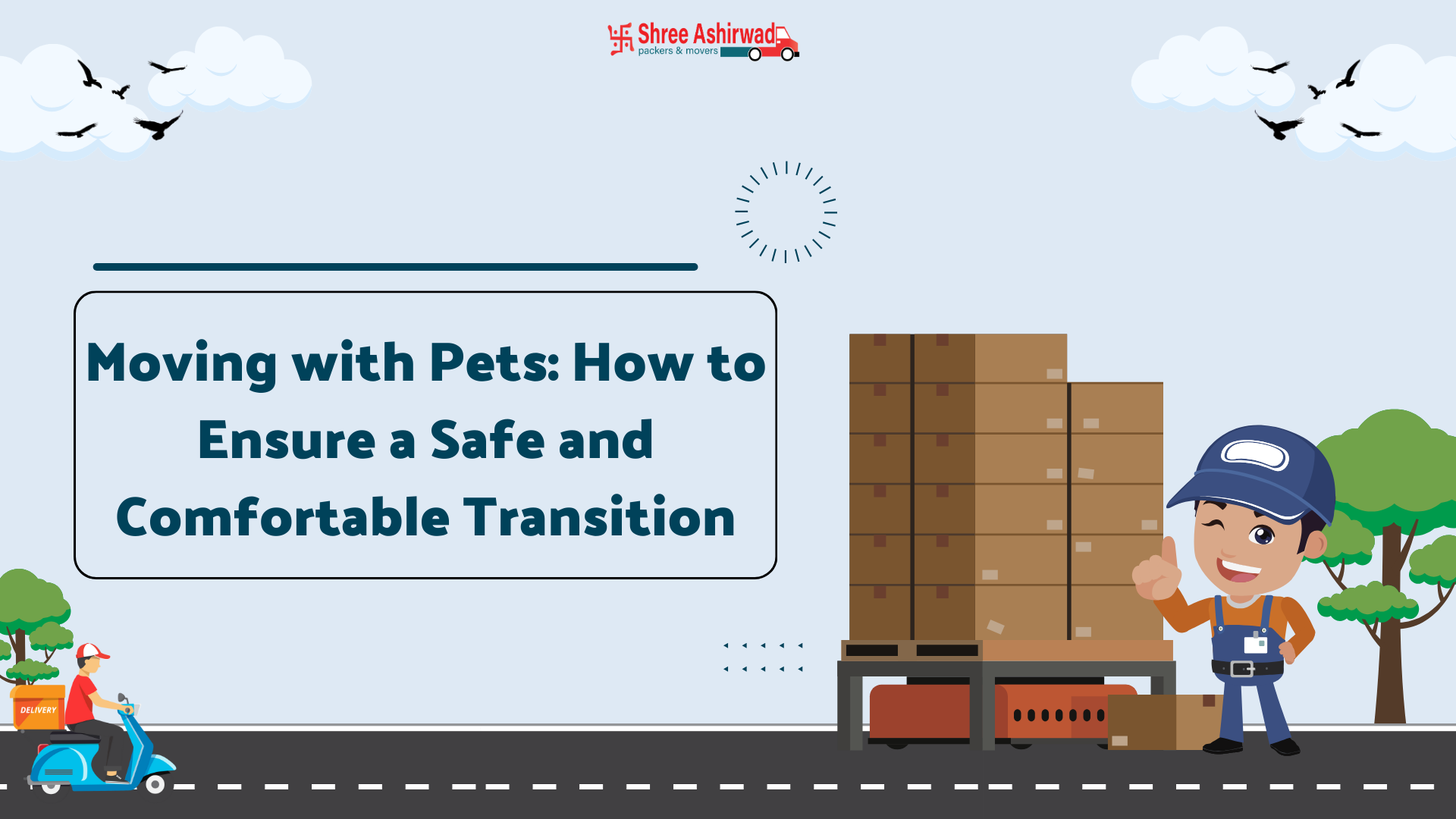Relocating to a new home can be a stressful experience for everyone involved, including our beloved pets. Pets, like humans, can experience anxiety and discomfort during a move, making it essential to plan and prepare to ensure their safety and comfort. This article will guide you through the necessary steps to make the moving process as smooth as possible for your furry companions.
Note: Click to know about Packers and Movers in Ranchi
Preparing Your Pet for the Move
Preparation is key to reducing the stress associated with moving for your pets. Start by getting your pet accustomed to the changes that will occur. If your pet is not used to traveling, begin by taking short car rides to help them acclimate to the sensation of being in a moving vehicle. Gradually increase the duration of these trips as the moving day approaches.
It is also important to maintain your pet’s routine as much as possible. Pets thrive on consistency, so keeping feeding times, walks, and play sessions on schedule can help reduce anxiety. If possible, pack your belongings over an extended period rather than all at once to minimize the disruption to your pet’s environment.
Choosing the Right Mode of Transportation
Selecting the appropriate mode of transportation for your pet is crucial for their safety and comfort. For short-distance moves, transporting your pet in your own vehicle is often the best option. Ensure that your pet is secured in a carrier or with a pet seatbelt to prevent injury during the trip.
For long-distance moves, you may need to consider other transportation options. If flying, check with the airline about their pet travel policies, including the size and type of carrier required. Some airlines allow small pets to travel in the cabin with you, while larger pets may need to be transported in the cargo hold. If your pet is flying, choose a direct flight to minimize travel time and reduce the stress on your pet.
In some cases, hiring a professional pet moving service may be the best option, especially if your pet has special needs or if you’re moving internationally. These services are experienced in handling the logistics of pet transportation and can ensure that your pet arrives safely and comfortably.
Keeping Your Pet Calm on Moving Day
Moving day can be chaotic, and the last thing you want is for your pet to become stressed or frightened. To keep your pet calm, designate a quiet room in your home where they can stay during the moving process. Place familiar items such as their bed, toys, and food in the room to create a comforting environment.
If your pet is particularly anxious, consider using a pheromone diffuser or spray to help them relax. These products mimic the natural calming pheromones that pets produce and can be very effective in reducing anxiety. Additionally, playing soft music or white noise in the room can help drown out the noise and commotion of the move.
It’s also a good idea to take your pet for a walk or play with them before the movers arrive to help burn off some energy and reduce their anxiety.
Safeguarding Your Pet During the Move
During the actual move, it’s essential to prioritize your pet’s safety. If you’re moving by car, make sure your pet is securely fastened in a carrier or with a pet seatbelt. Never let your pet roam freely in the vehicle, as this can be dangerous for both you and your pet.
If you’re flying, arrive at the airport early to allow plenty of time for check-in and security procedures. Ensure that your pet’s carrier is properly labeled with your contact information and that it meets all airline requirements.
Regardless of how you’re traveling, always have a pet emergency kit on hand. This should include food, water, a bowl, medications, a leash, waste bags, and any necessary paperwork, such as vaccination records. Having these items readily available can help you quickly address any issues that arise during the journey.
Settling Your Pet into the New Home
Once you’ve arrived at your new home, take the time to help your pet adjust to their new environment. Start by setting up a designated space for your pet with their bed, toys, and food. This will give them a sense of familiarity and security as they explore their new surroundings.
Gradually introduce your pet to different areas of the house, allowing them to acclimate at their own pace. Be patient, as it may take some time for your pet to feel comfortable in their new home.
Maintaining your pet’s routine is just as important after the move as it was before. Keep feeding times, walks, and play sessions consistent to provide a sense of normalcy. If your pet seems particularly stressed, consider consulting with your veterinarian about additional calming strategies or products.
Addressing Special Considerations for Different Types of Pets
Different types of pets have unique needs when it comes to moving. Dogs and cats are the most common pets, but if you have exotic pets such as birds, reptiles, or small mammals, there are additional considerations to keep in mind.
Birds can be particularly sensitive to changes in their environment. It’s important to keep them in a familiar cage and cover it with a blanket during the move to reduce stress. Ensure that the temperature in the vehicle or aircraft is appropriate for your bird’s species.
Reptiles and amphibians require specific temperature and humidity conditions, so it’s crucial to have a plan in place to maintain these during the move. Use insulated carriers and portable heat sources to keep your reptile comfortable.
Small mammals like rabbits, guinea pigs, and hamsters are prone to stress during moves. Keep them in their familiar cages and avoid excessive handling. Like birds, covering their cages with a blanket can help reduce anxiety.
Note: Click to know about Packers and Movers in Bokaro
Final Thoughts: Ensuring a Smooth Transition
Moving with pets requires careful planning and consideration, but with the right preparation, you can ensure a safe and comfortable transition for your furry friends. By taking the time to acclimate your pet to the moving process, choosing the right transportation, and maintaining their routine, you can minimize stress and help them settle into their new home with ease.
Remember, your pet looks to you for comfort and reassurance, so staying calm and positive during the move will help them feel more secure. With these tips in mind, you and your pet can embark on your new adventure together with confidence.




